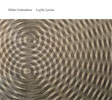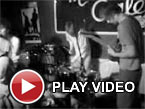Hildur Guðnadóttir, "Leyfðu Ljósinu"

On her third solo album (the title being Icelandic for "Allow the Light"), Hildur Guðnadóttir presents a performance that is entirely live (without audience) of just cello, voice and electronics, which begins deceptively simple, but is soon molded into a rich work of intimate beauty as much as it is a complex study of the most rudimentary sounds in a compelling structure.
Consisting only of two pieces, the short "Prelude" is exactly that:a short, sparse opening of dry, unaffected cello playing that may have functioned as much as a warm-up for Hildur as it does for the album as a whole.It leads directly into the 35-minute title track, and the album proper.
Opening with the continued cello and the addition of delicate vocals, the same sparse, intimate vibe continues, insinuating basic expectations for the rest of the album:from the sound and manner of recording, I was expecting an entire album of only strings and voice.Soon the cello drops away entirely, leaving just the vocals to be carefully looped and processed (in real time) into layers, any actual words become secondary to the melody created from the effects.
The returning cello cuts through the fragmented pieces of voice, resulting in a rich combination of natural and electronic sound that builds in density, resulting in a swirling mass of sound that takes a slightly darker turn, hovering ominously over droning low-end cello.The sound shifts in its closing, where the cello becomes less about texture and more about taut, rhythmic swipes that are layered upon themselves, resulting in a jarring, rapid motif that builds and builds into a suspenseful coda, ending what is mostly a reflective, contemplative piece on a tense, almost unsettling note.
As a completely live work, Leyfðu Ljósinu speaks volumes of Hildur Guðnadóttir's ability as both a composer and performer.The building of sound from a delicate voice and cello to a heavy, swirling mass of sound and closing on a tense, rapid note works extremely well from a structural perspective, and the fact that it was all performed in real time with no overdubs or post-processing makes it all the more exceptional.
samples:
 




